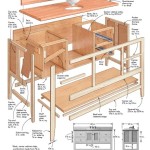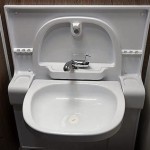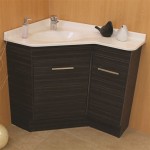How To Install a Shut-Off Valve on a Bathroom Sink Drain
Installing a shut-off valve on a bathroom sink drain, while seemingly counterintuitive at first glance, actually refers to installing shut-off valves on the water supply lines leading to the sink faucet. These valves provide a means of stopping the flow of water to the faucet without having to shut off the main water supply to the entire house. This proves invaluable for repairs, replacements, or any other maintenance that requires disconnecting the faucet. This article provides a comprehensive guide on how to properly install shut-off valves on the water supply lines beneath a bathroom sink.
Before commencing any plumbing project, safety is paramount. Always wear safety glasses to protect eyes from debris. It is also advisable to wear work gloves to protect hands. Most importantly, the water supply to the bathroom must be completely shut off. This is typically achieved by turning off the main water valve to the house or locating and turning off the individual shut-off valves for the bathroom, if present. Test the faucet after shutting off the water supply to confirm the water is completely off before proceeding. Place a bucket or towels under the work area to catch any residual water that may be present in the pipes.
Key Point 1: Gathering the Necessary Tools and Materials
Successful installation relies heavily on having the correct tools and materials readily available. A meticulous approach to preparation minimizes delays and potential errors during the installation process. The following list details the essential items needed:
1. New Shut-Off Valves: Select the appropriate type of shut-off valve compatible with the existing plumbing. The most common types are compression valves, push-fit valves, and sweat (soldered) valves. Compression and push-fit valves are generally preferred for DIY installations due to their ease of use and lack of soldering requirements. Ensure the valve size matches the existing pipe diameter (typically ½ inch or 3/8 inch).
2. Pipe Cutter or Tube Cutter: A pipe cutter or tube cutter is necessary for cutting copper pipes cleanly and squarely. Choose a cutter appropriate for the type of pipe being worked with. For plastic pipes, a plastic pipe cutter is required.
3. Adjustable Wrench: Two adjustable wrenches are needed to tighten the compression fittings on compression valves or to secure push-fit valves. A smaller adjustable wrench may also be helpful for tightening smaller fittings.
4. Basin Wrench: A basin wrench is a specialized tool designed to reach and loosen or tighten the nuts that secure the faucet to the sink. While not directly used for installing the shut-off valves themselves, it is often necessary to remove the old faucet supply lines, and having this tool readily available can save time and effort.
5. Deburring Tool or Sandpaper: After cutting copper pipes, a deburring tool or sandpaper removes any burrs or sharp edges from the cut end. This ensures a smooth surface for a proper seal with the new valve.
6. Teflon Tape or Pipe Joint Compound: Teflon tape or pipe joint compound (pipe dope) can be used on threaded connections to create a watertight seal. This is typically used on the threads of the shut-off valve connection, especially if connecting to an existing threaded pipe.
7. Clean Rags or Towels: Essential for cleaning up any spills and drying the pipes before making connections.
8. Bucket: To catch any water that may still be in the pipes after the main water supply is turned off.
9. Safety Glasses and Work Gloves: Ensuring personal safety is paramount when working with plumbing.
Key Point 2: Step-by-Step Installation Procedure
With the tools and materials prepared, the next step involves the actual installation of the shut-off valves. This section outlines the process for both compression and push-fit valve installations, as these are the most common DIY methods.
A. Compression Valve Installation:
Step 1: Prepare the Pipe: Turn off the water supply to the sink. Place a bucket underneath the existing supply line to catch any remaining water. Use a pipe cutter to cut the existing supply line in a location that allows sufficient space to install the new valve. Ensure the cut is clean and square. Remove any burrs from the cut end using a deburring tool or sandpaper. Clean the pipe thoroughly.
Step 2: Install the Compression Nut and Ferrule: Slide the compression nut onto the pipe, followed by the compression ferrule (also known as a compression ring or olive). Make sure the open end of the ferrule faces towards the end of the pipe.
Step 3: Insert the Pipe into the Valve: Insert the pipe into the compression valve until it is fully seated. Ensure the pipe is pushed in as far as it will go to allow for a secure connection.
Step 4: Tighten the Compression Nut: Slide the compression nut towards the valve and engage the threads. Hand-tighten the nut initially. Then, use two adjustable wrenches to tighten the nut further. Place one wrench on the valve body to hold it steady, and use the other wrench to tighten the nut. Tighten the nut until it is snug but not overly tight. Overtightening can damage the ferrule and create leaks. Generally, tightening about ½ to ¾ of a turn past hand-tight is sufficient.
Step 5: Repeat for the Other Supply Line: Repeat steps 1 through 4 for the other water supply line (hot or cold).
B. Push-Fit Valve Installation:
Step 1: Prepare the Pipe: Turn off the water supply to the sink. Place a bucket underneath the existing supply line to catch any remaining water. Use a pipe cutter to cut the existing supply line in a location that allows sufficient space to install the new valve. Ensure the cut is clean and square. Remove any burrs from the cut end using a deburring tool or sandpaper. The pipe end must be clean and free of any imperfections for a proper seal.
Step 2: Mark Insertion Depth (if required): Some push-fit valves require marking the insertion depth on the pipe. Refer to the manufacturer's instructions for specific details. This ensures that the pipe is inserted fully into the valve.
Step 3: Insert the Pipe into the Valve: Push the pipe firmly into the push-fit valve until it bottoms out. You should feel a click or a distinct resistance indicating that the pipe is fully inserted and locked in place. Double-check that the pipe is securely seated.
Step 4: Repeat for the Other Supply Line: Repeat steps 1 through 3 for the other water supply line (hot or cold).
C. Connecting the Faucet Supply Lines to the New Shut-Off Valves:
Once the shut-off valves are installed, the flexible supply lines from the faucet need to be connected to the valves. These supply lines typically have a threaded connection. Apply Teflon tape or pipe joint compound to the threads of the faucet supply lines before connecting them to the shut-off valves. Tighten the connections using an adjustable wrench until they are snug and secure. Avoid over-tightening, which can damage the threads.
Key Point 3: Testing for Leaks and Final Adjustments
After installing the shut-off valves and connecting the faucet supply lines, it is crucial to test for leaks before considering the job complete. This step ensures that all connections are secure and that there are no potential issues that could lead to water damage.
Step 1: Slowly Turn on the Water Supply: Gradually turn on the main water supply or the individual shut-off valve for the bathroom. Observe the connections carefully for any signs of leaks.
Step 2: Check All Connections: Inspect all connections, including the compression nuts on the compression valves (if applicable), the joints of the push-fit valves (if applicable), and the connections between the faucet supply lines and the shut-off valves. Use a dry cloth or paper towel to wipe around each connection to check for any moisture. Even a small amount of moisture indicates a potential leak.
Step 3: Tighten Leaking Connections (if necessary): If a leak is detected, carefully tighten the leaking connection slightly. For compression fittings, use two wrenches as described earlier, holding the valve body steady while tightening the nut a small amount. For threaded connections, tighten the fitting slightly using an adjustable wrench. Avoid over-tightening, as this can damage the threads or the valve. If the leak persists even after tightening, it may be necessary to disassemble the connection, reapply Teflon tape or pipe joint compound, and reassemble it.
Step 4: Operate the Shut-Off Valves: Open and close the newly installed shut-off valves several times to ensure they are functioning correctly. Check for any leaks around the valve stems or handles while operating the valves.
Step 5: Monitor for Delayed Leaks: After testing the connections, continue to monitor them for several hours or even overnight to check for any delayed leaks. Sometimes, a small leak may not be immediately apparent. Place a dry cloth or paper towel under the connections to help detect any slow leaks.
Step 6: Clean Up the Work Area: Once you are confident that there are no leaks and that the shut-off valves are functioning properly, clean up the work area. Remove any tools, materials, and debris. Dry any wet surfaces and dispose of any waste properly.
By following these steps carefully, one can successfully install shut-off valves on the water supply lines beneath a bathroom sink, providing a convenient and reliable means of controlling the water flow to the faucet for future maintenance or repairs.

How To Install Water Shut Off Valve For Sinks

How To Install A New Bathroom Water Supply Shutoff Valve

How To Replace Shutoff Valve Under Bathroom Sink

Replace Bathroom Sink Shut Off Valve

How To Replace A Leaking Shutoff Valve Under Sink

How To Install A Water Shut Off Valve 9 Minutes Home Repair Tutor

How To Install A Compression Water Shut Off Valve Bathroom Sink

How To Sweat On A Valve Water Installation

How To Fix A Leaking Water Supply Shut Off Valve Easy Diy For Beginners

Handle Broke Off On Shut Valve Under Sink Diy Plumbing Repair Bathroom







